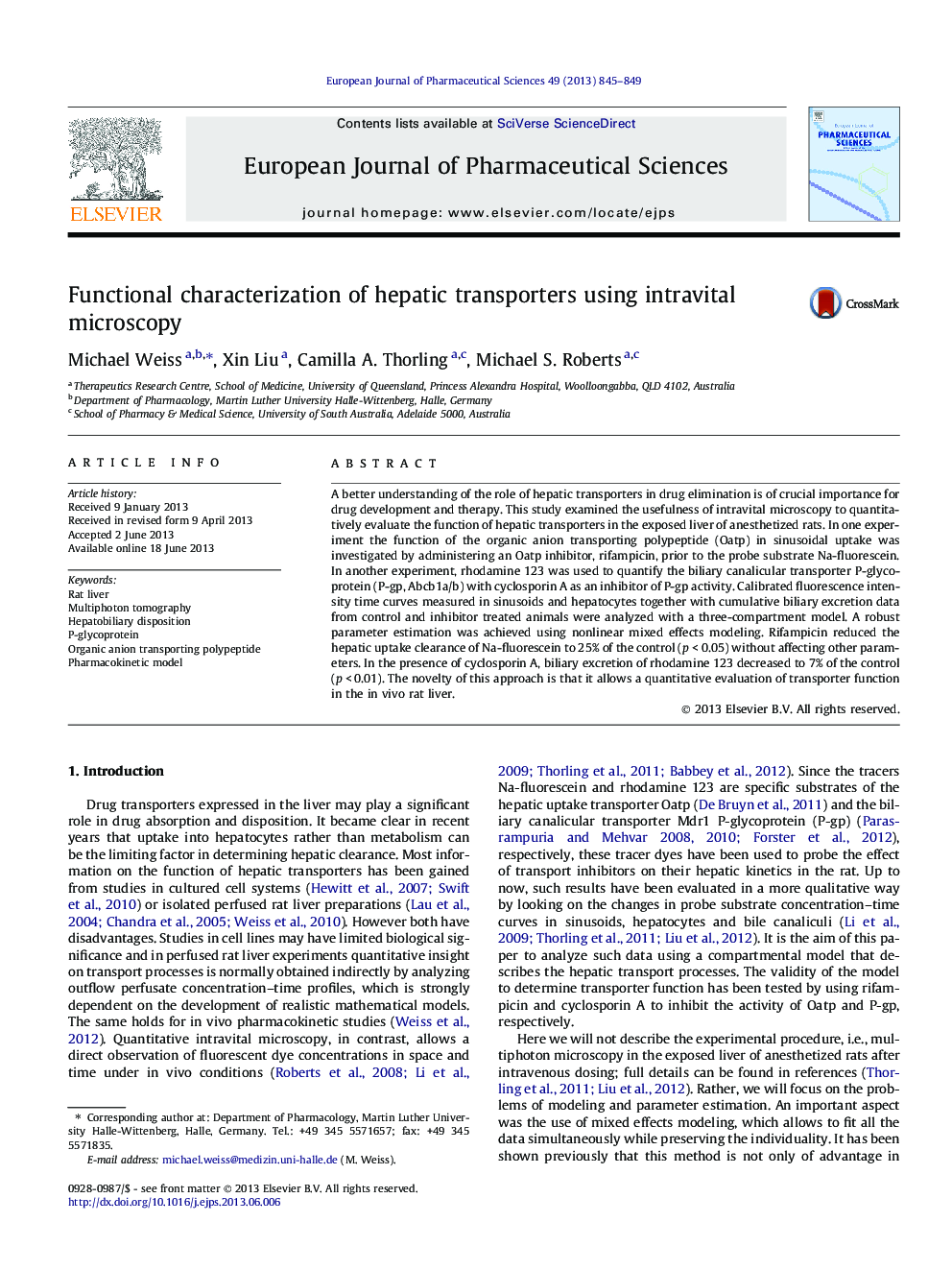| Article ID | Journal | Published Year | Pages | File Type |
|---|---|---|---|---|
| 2480751 | European Journal of Pharmaceutical Sciences | 2013 | 5 Pages |
A better understanding of the role of hepatic transporters in drug elimination is of crucial importance for drug development and therapy. This study examined the usefulness of intravital microscopy to quantitatively evaluate the function of hepatic transporters in the exposed liver of anesthetized rats. In one experiment the function of the organic anion transporting polypeptide (Oatp) in sinusoidal uptake was investigated by administering an Oatp inhibitor, rifampicin, prior to the probe substrate Na-fluorescein. In another experiment, rhodamine 123 was used to quantify the biliary canalicular transporter P-glycoprotein (P-gp, Abcb1a/b) with cyclosporin A as an inhibitor of P-gp activity. Calibrated fluorescence intensity time curves measured in sinusoids and hepatocytes together with cumulative biliary excretion data from control and inhibitor treated animals were analyzed with a three-compartment model. A robust parameter estimation was achieved using nonlinear mixed effects modeling. Rifampicin reduced the hepatic uptake clearance of Na-fluorescein to 25% of the control (p < 0.05) without affecting other parameters. In the presence of cyclosporin A, biliary excretion of rhodamine 123 decreased to 7% of the control (p < 0.01). The novelty of this approach is that it allows a quantitative evaluation of transporter function in the in vivo rat liver.
Graphical abstractFigure optionsDownload full-size imageDownload high-quality image (71 K)Download as PowerPoint slide
